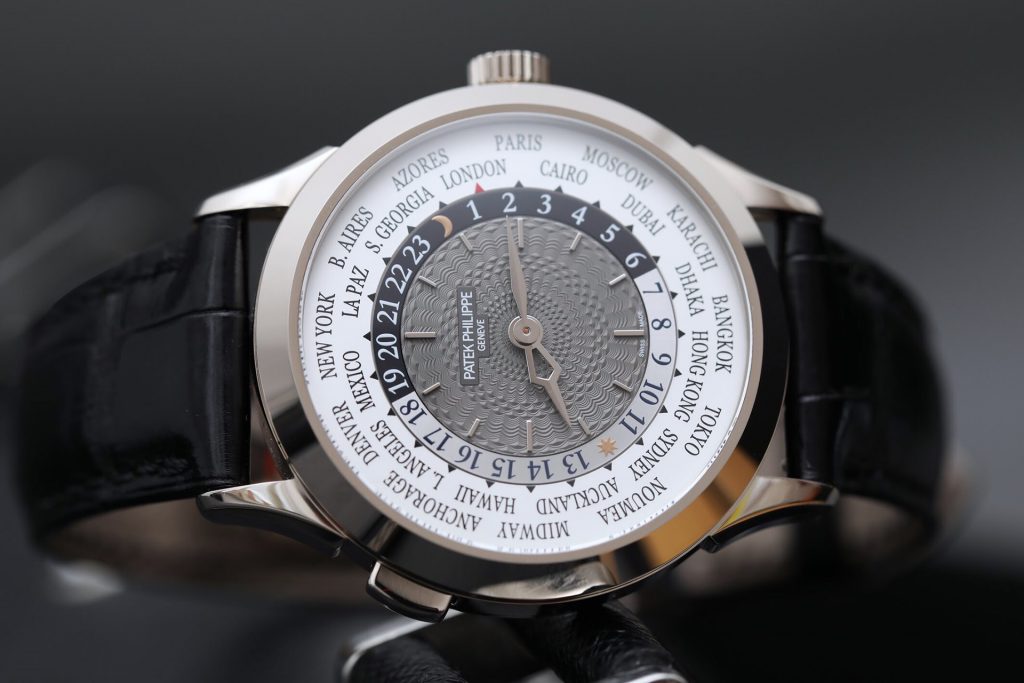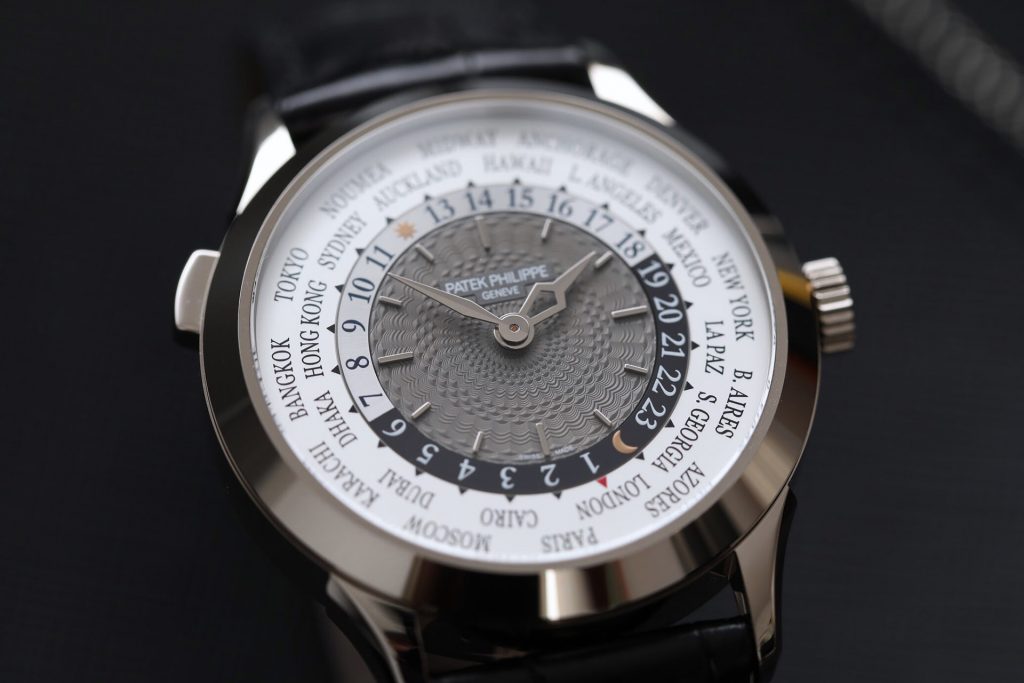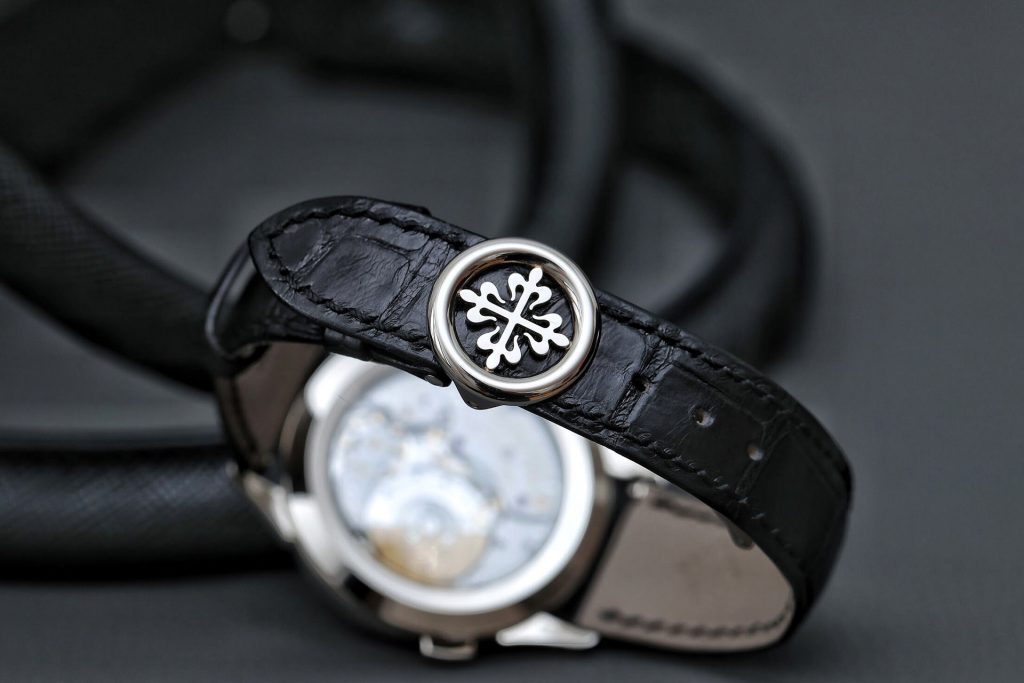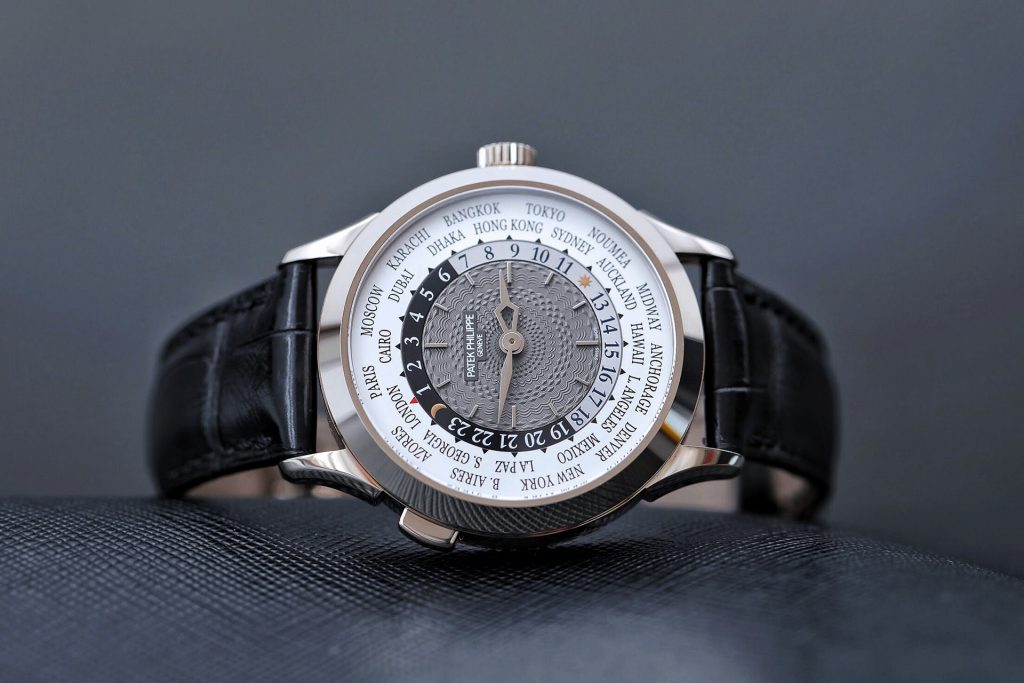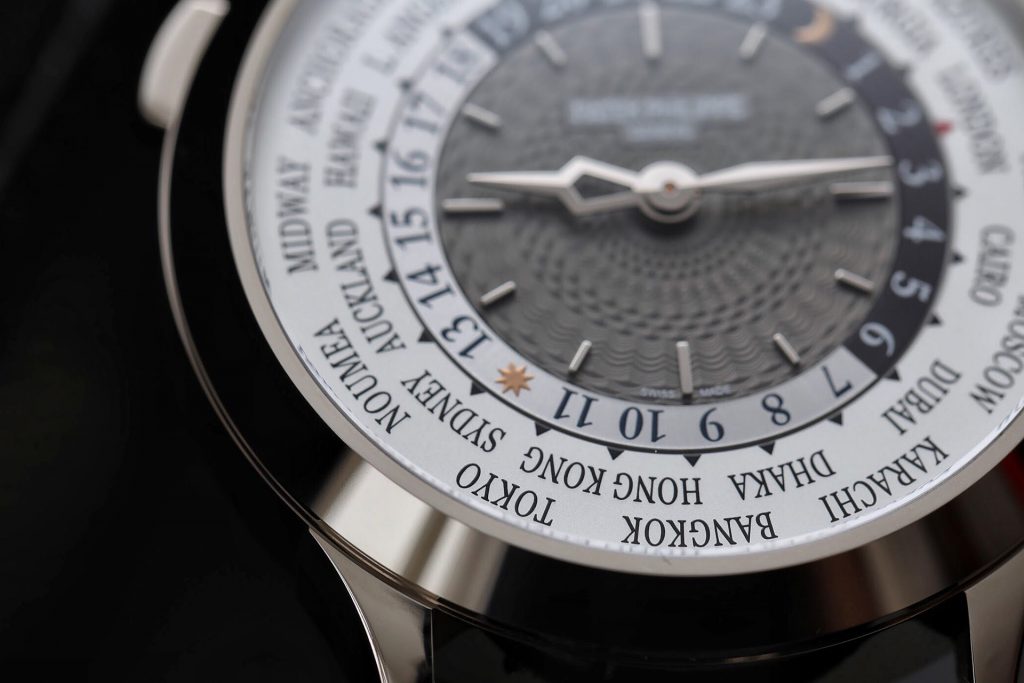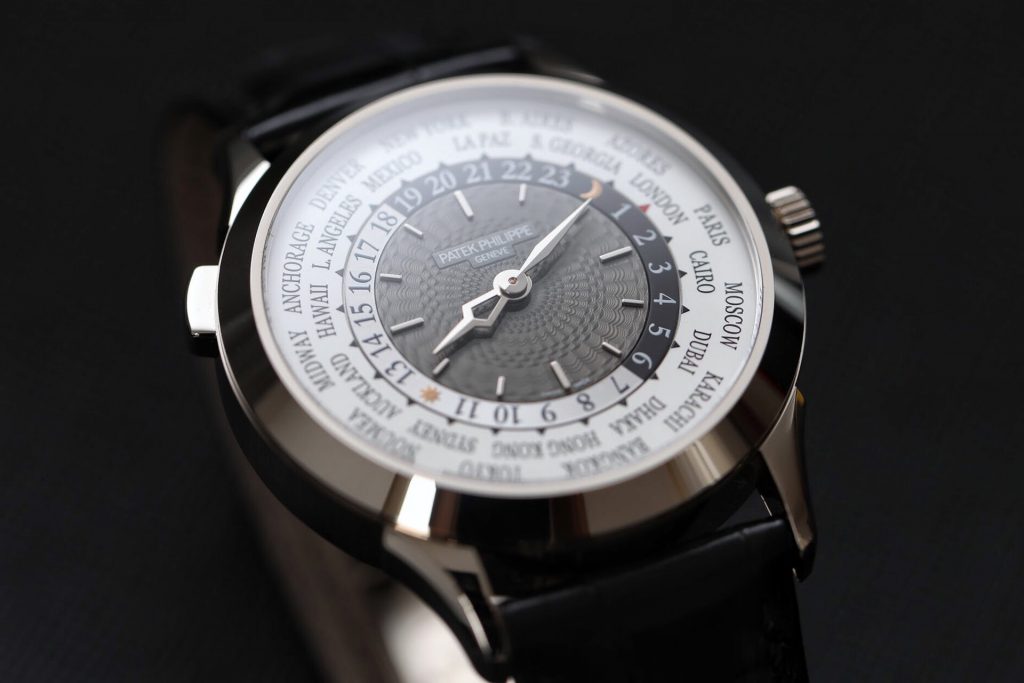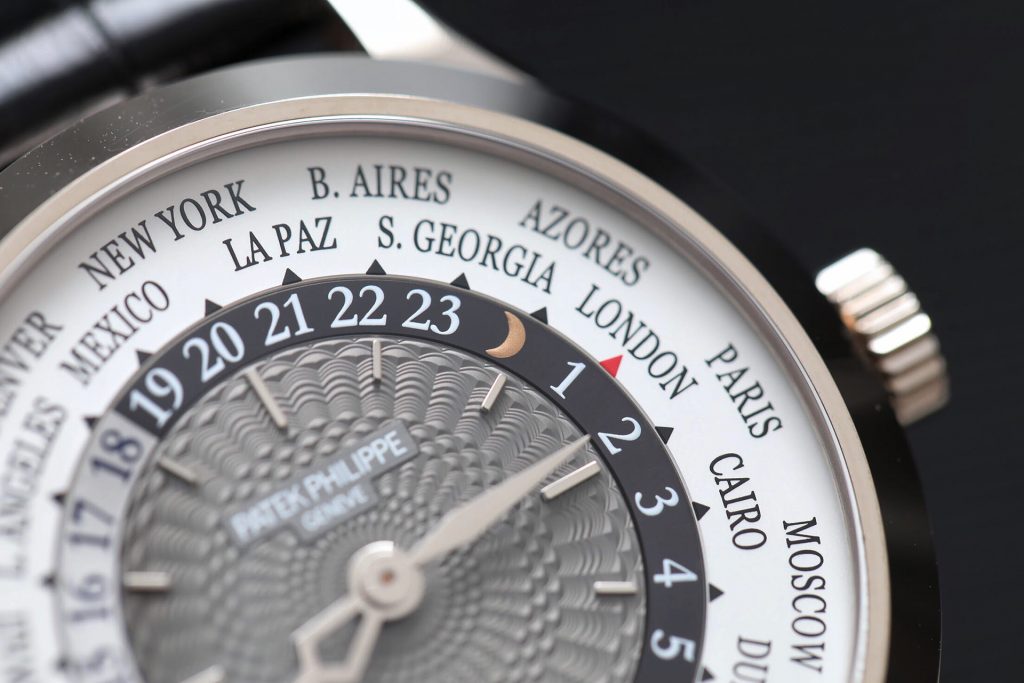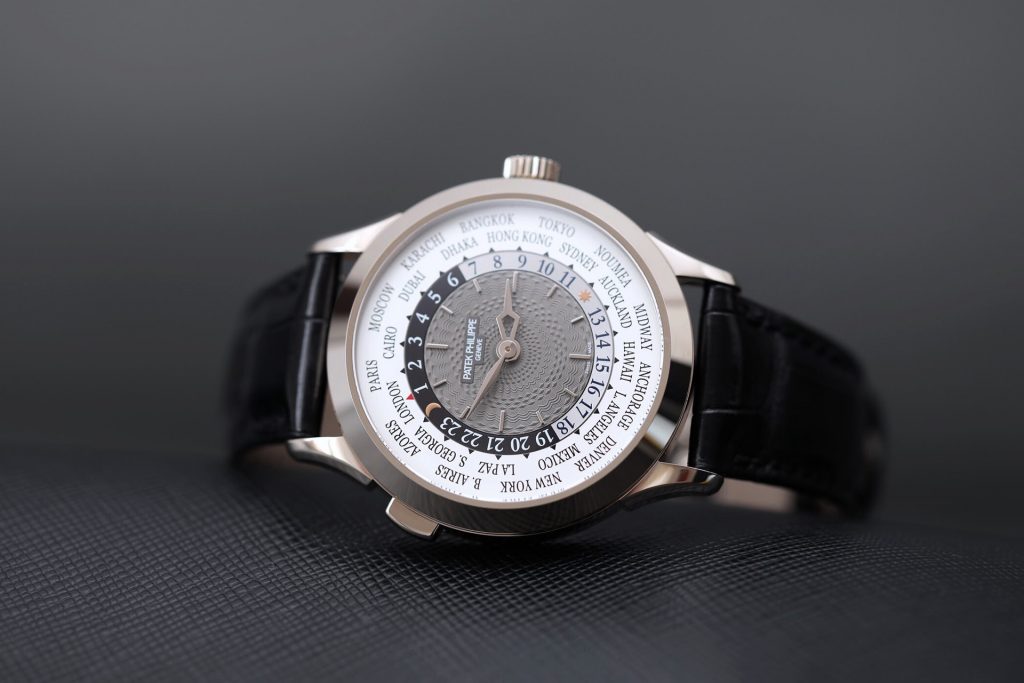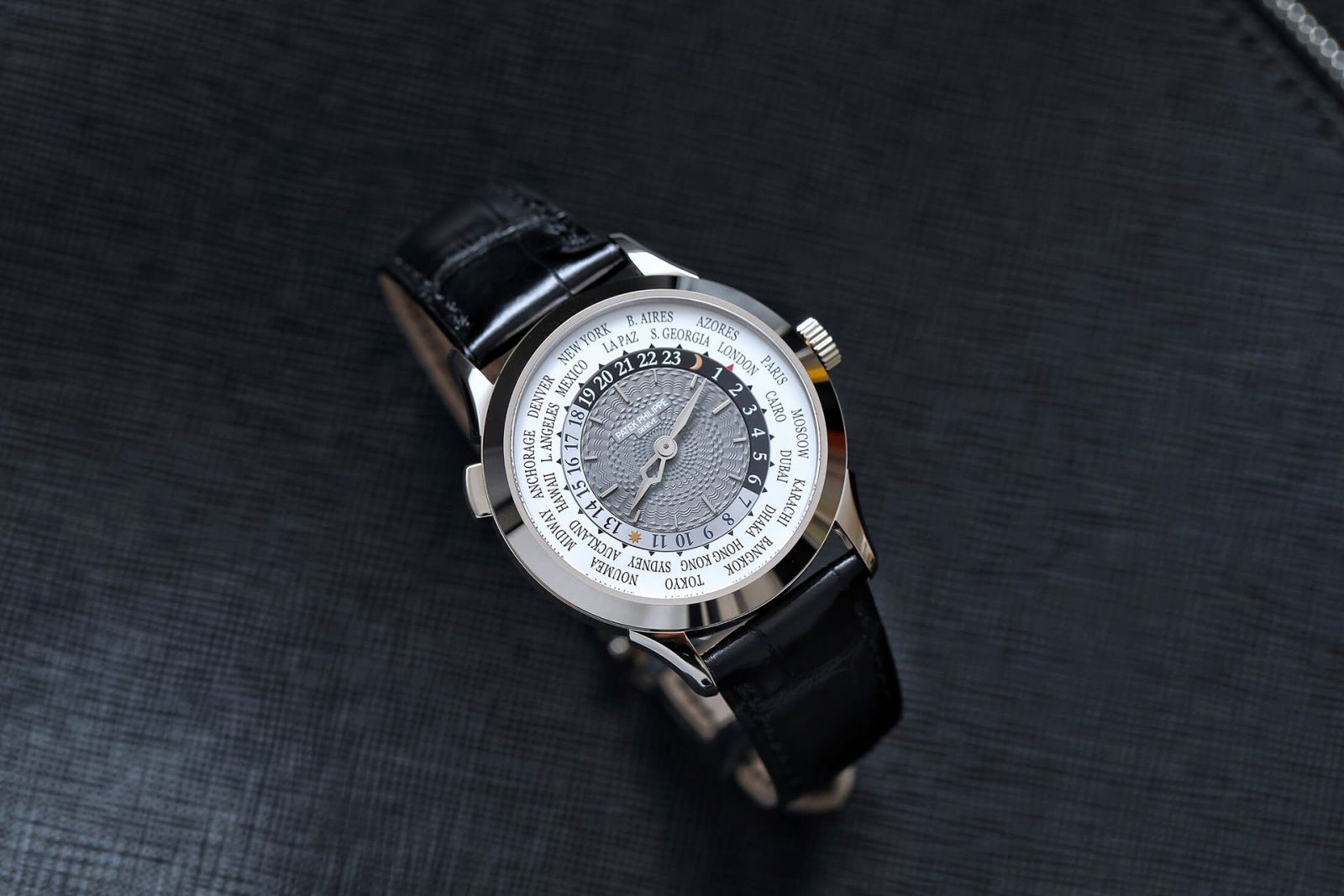Did you know that in regards to the world time-zones, the Russian capital Moscow recently has shifted one hour closer to Western Europe, being relocated to UTC+3 instead of UTC+4 as it has been for decades? And did you hear that Dubai now represents the time-zone instead of Riyadh, or Brisbane instead of Noumea? Some political decisions have led to a new alignment of the world times. This was reason enough for Patek Philippe to introduce a new World Time watch in 2016 with a modified city scale, and also to conduct some other minor changes in design. And this was reason enough for Swisswatches to go back little in time and pick up a watch from two years ago.

The worldtime-zones have changed – the Patek Philippe World Time Ref. 5230 is up to date
World Time watches are deeply rooted in the history of Patek Philippe. From 1931 onwards to be accurate. In that year the Genevan watchmaker Louis Cottier has invented the first mechanism with two crowns allowing to switch between all 24 world time-zones on one dial. He produced it for a couple of clients – amongst them Patek Philippe, where it became one of the most popular complicated wristwatches until today. The World Time watch Ref. 5230 from 2016 shows the updated city scale and time zone and replaces all previous models from their Heure Universelle collection.
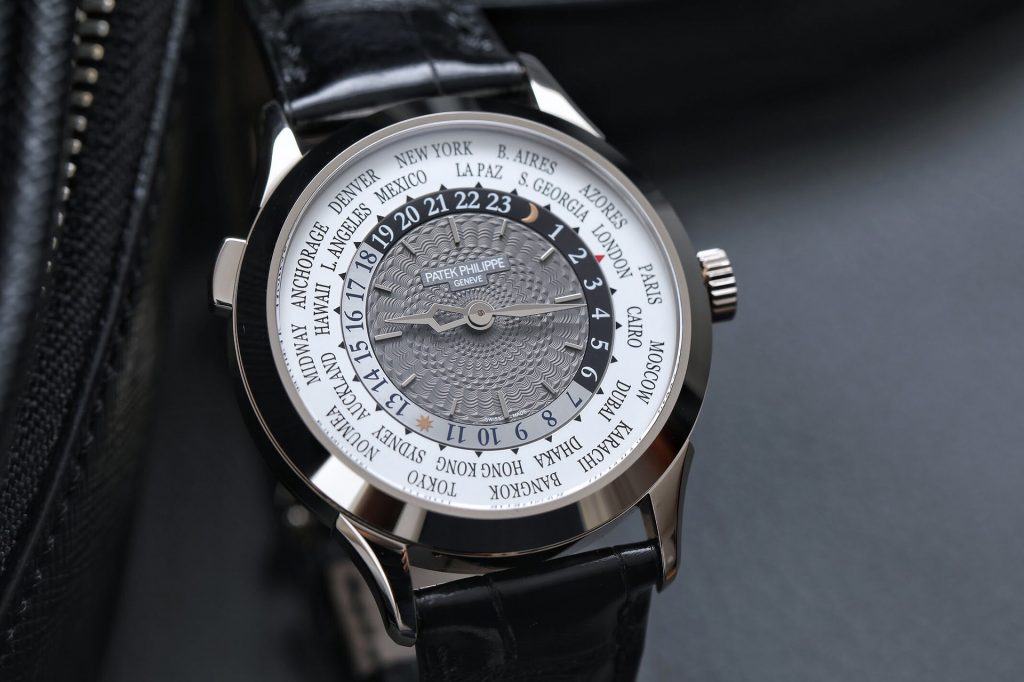
Watchmaker Louis Cottier has caused a true hype in 1931 when he invented the first wristwatch with worldtime mechanism
Patek Philippe collectors will probably recognize the different case design at first sight. The iconic Calatrava case (available in white or rose gold 5N) has reworked winglet-style lugs and a narrow, smoothly polished bezel. Also you will not find any crown protectors any longer. Overall, it gives the watch a slightly more elegant appearance then his predecessors, as we find. The slender, elegant case design is supported by an ultra-thin self-winding mechanical movement (calibre 240 HU). HU stands for Heure Universelle. The micro-rotor design was patented by Patek Philippe in 1977 and has a significant impact on the size of the winding rotor. The movement also includes the patented Spiromax balance spring.
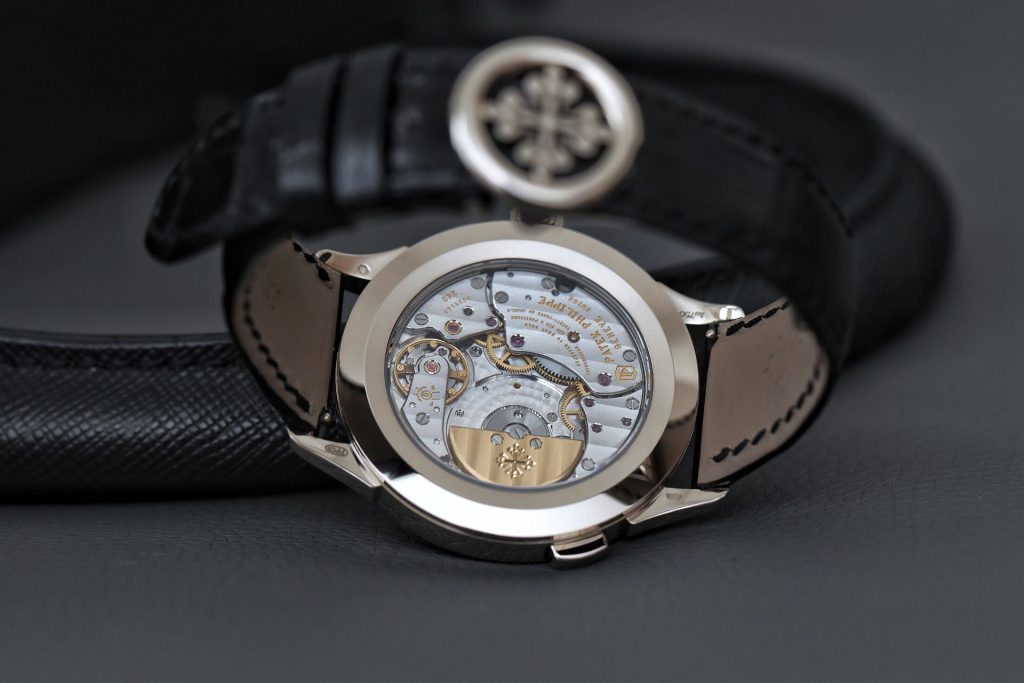
Slender looking – the ultra-thin micro-rotor of the self-winding mechanical movement
Looking into more details also the hands have received a new look. The pierced hour hand has a silhouette showing the famous “Southern Cross” constellation, and the minute hand features a lozenge-shaped contour. Looks similar to the Dauphine minute hand from previous models but are in detail new.
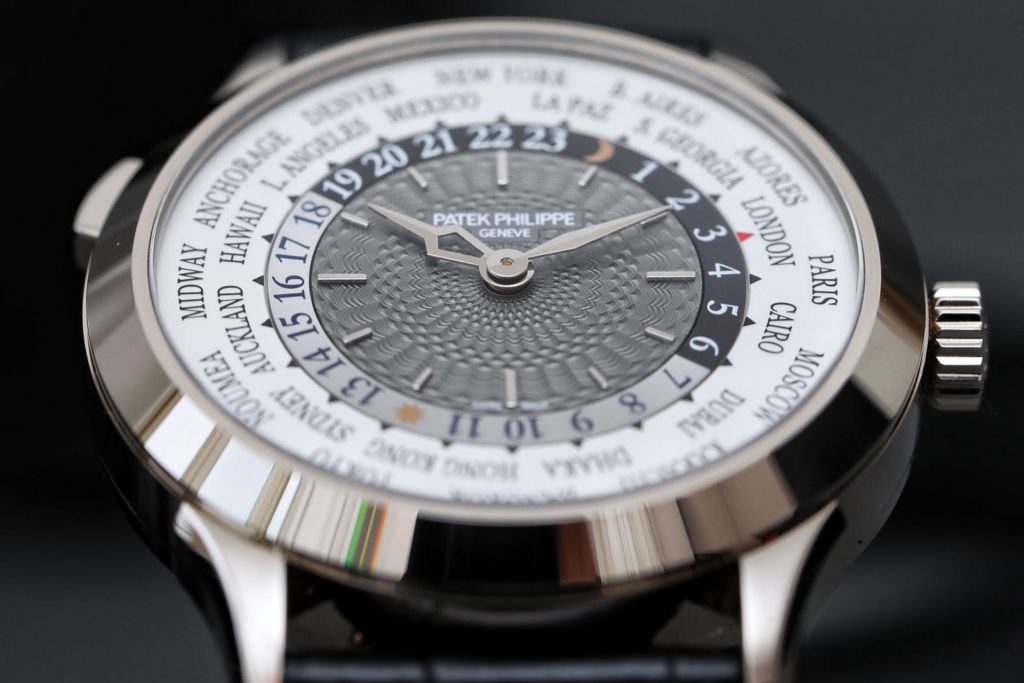
The iconic Calatrava case has received a little upgrade
The centres of World Time watches from Patek Philippe are always marvellously decorated with hand-guilloched decors, usually in enamel. The Ref. 5230 shows a very filigreed woven pattern and is inspired from a pocket watch’s dial motif, which is displayed at the Patek Philippe Museum. The rose engine to make these dials is still used today and almost one hundred years old. A rolling stone gathers no moss.
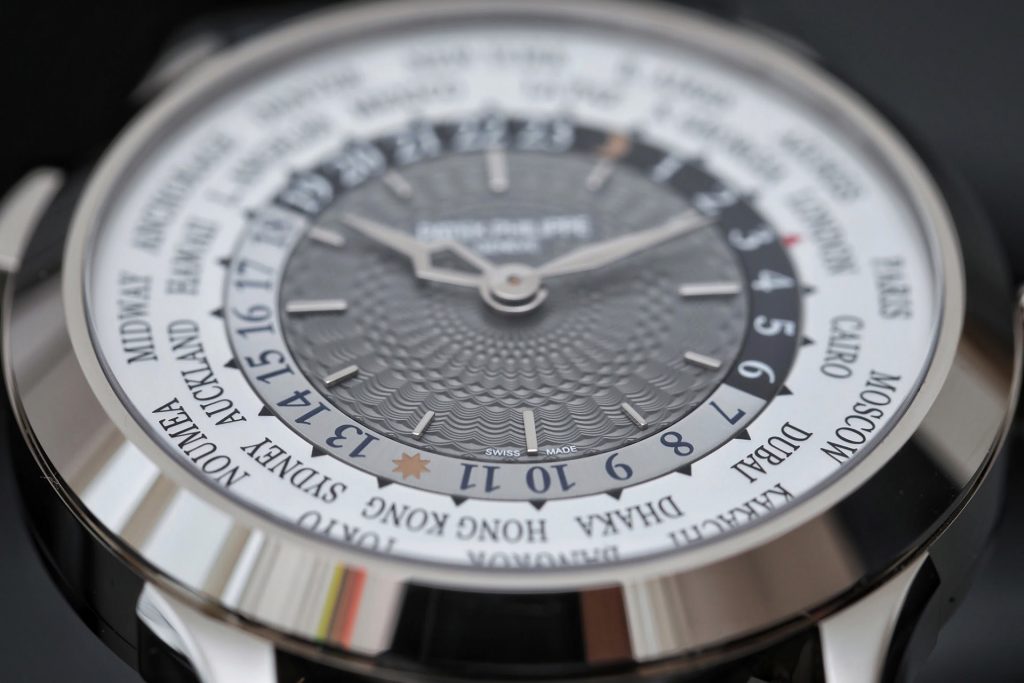
Nicely decorated – the hand-guilloched dial decor
A few words on the function, which is simple to read, but not to make. The local time is displayed above the small red arrow at 12 o’clock. The other 23 zones are readable at a glance on the 24-hour ring that rotates counter-clockwise within the city disk. So if you want to switch to a new time zone while travelling you just need to press the pusher at 10 o’clock as often until the desired city name reaches the red arrow. During this process the time zone mechanism is uncoupled from the movement so that the time will run unaffected.
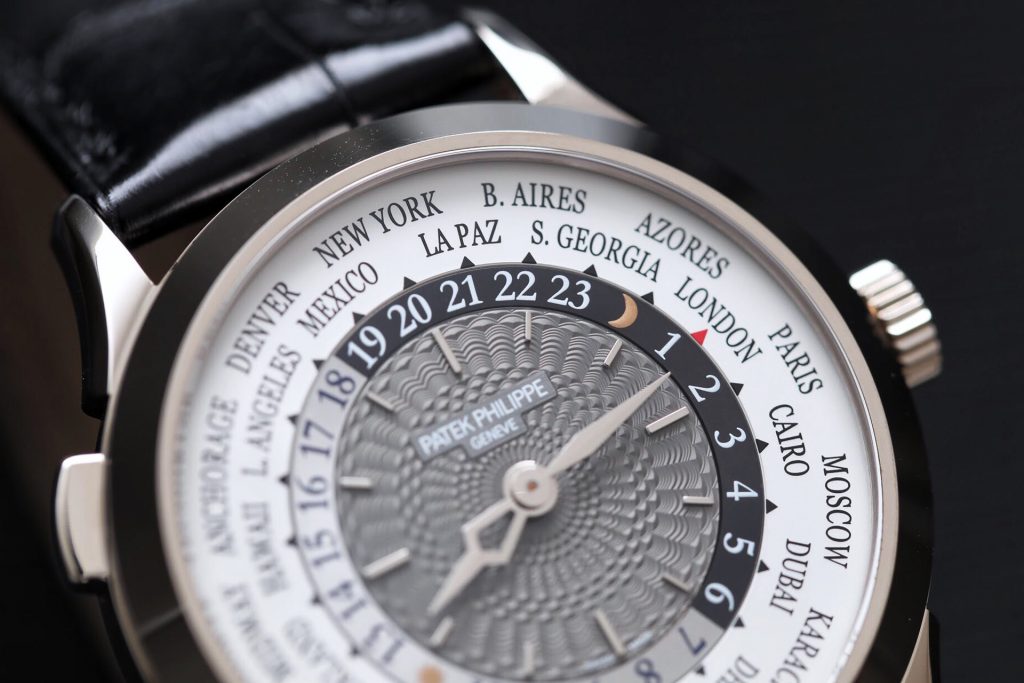
Patek Philippe World Time Ref. 5230
The Patek Philippe World Time watch Ref. 5230 is available with a white or rose gold case (hands are made in the same gold matching the case) and an alligator leather strap in black for the white gold and brown for the rose gold version.
